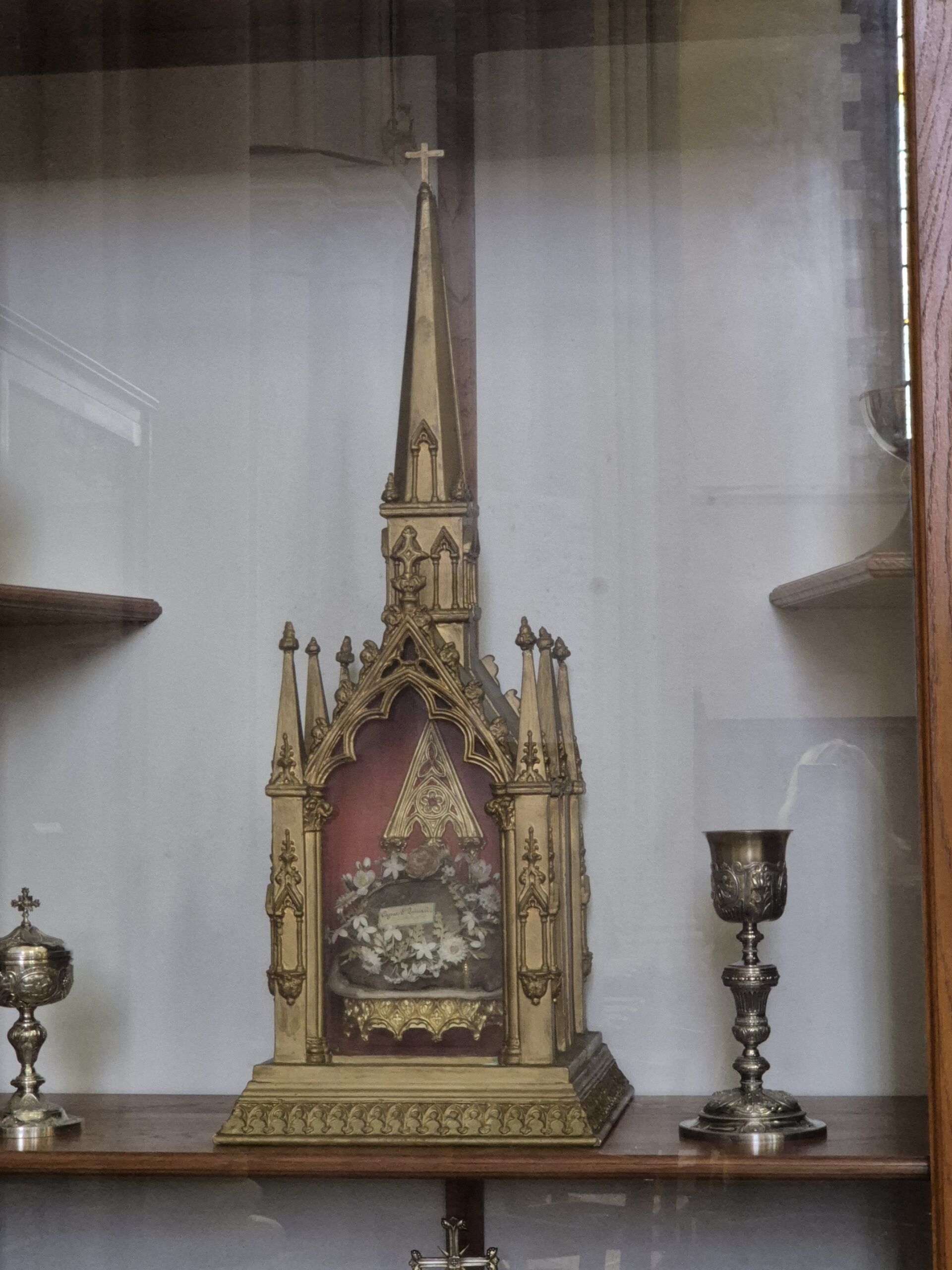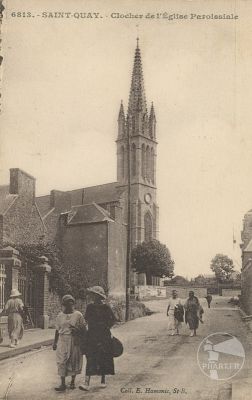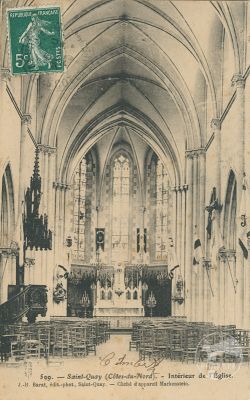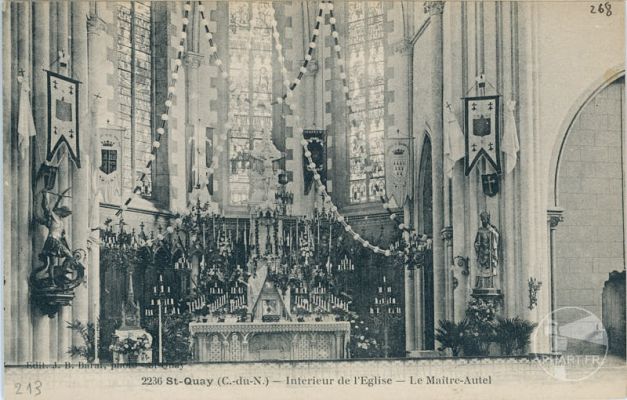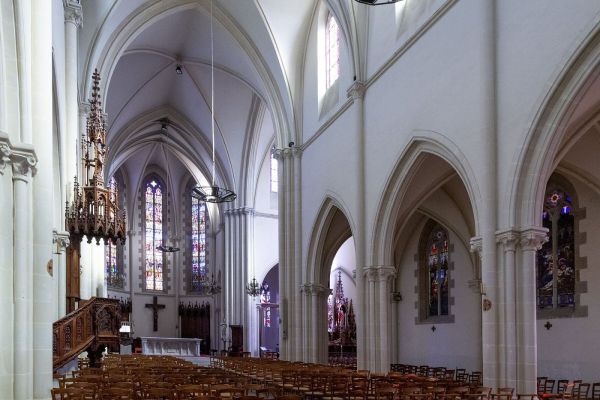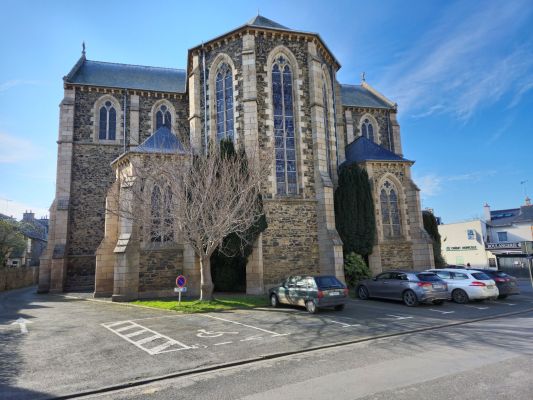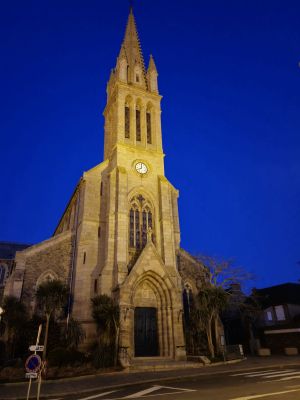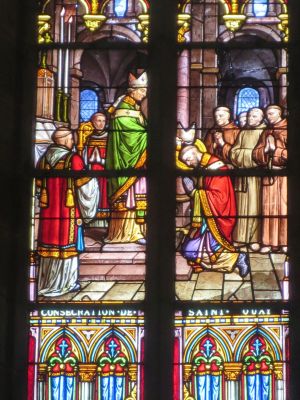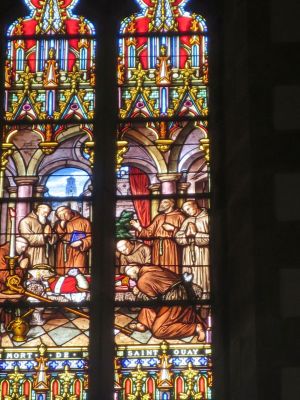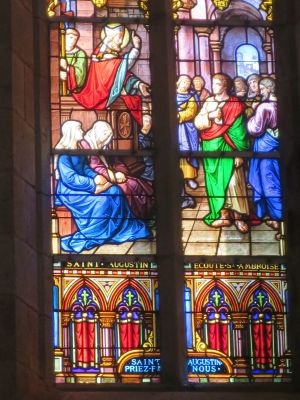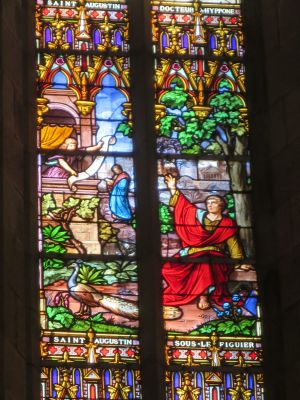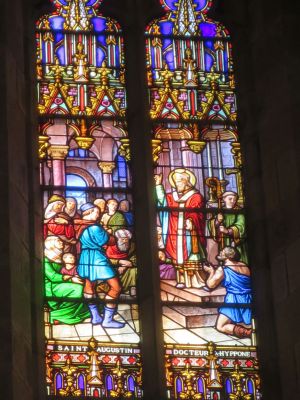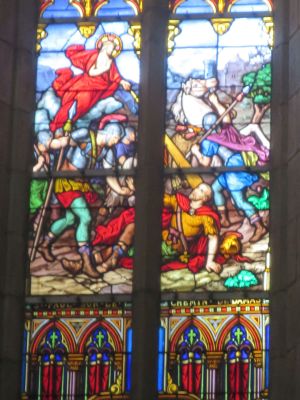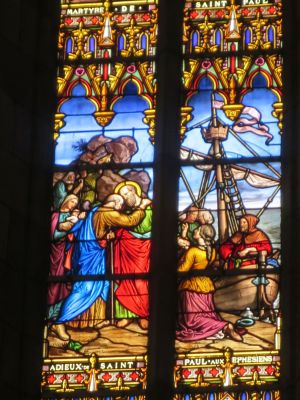From the old church to the new one
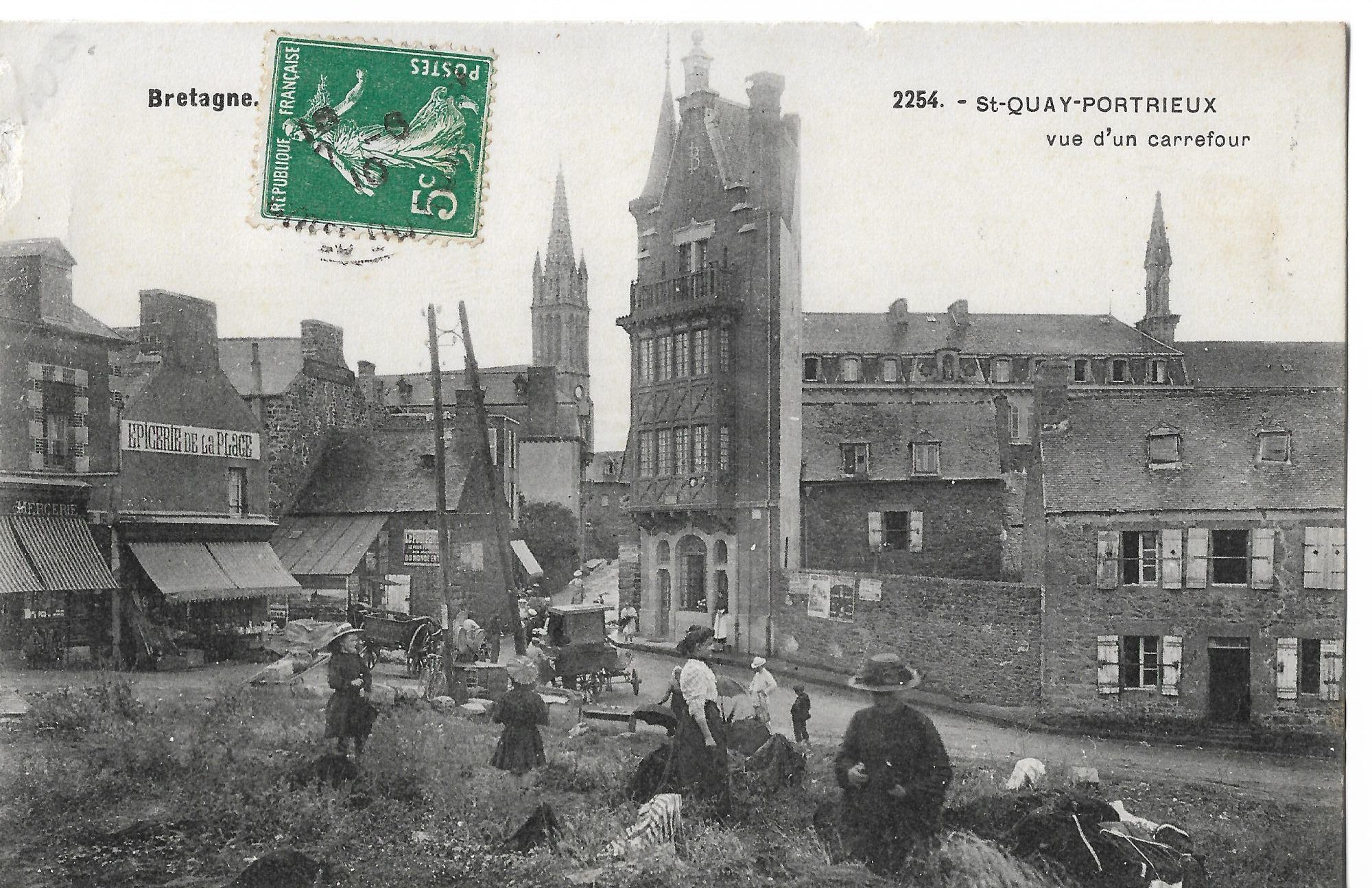
The first parish church
The first known parish church in Saint-Quay-Portrieux was built near the present-day Casino beach. The oldest parts of the church date back to the 13th century, and were enlarged and remodeled in subsequent centuries.
This low church, with its narrow openings, was around 35 meters long and 10 meters wide, and contained some of the statues and paintings that now adorn the present-day church and the Kertugal chapel. There were many vaults and tombstones, because until the 1719 edict of the Parlement de Bretagne forbidding burials inside churches for reasons of hygiene, it was customary to bury nobles and notables there. The cemetery surrounding the church extended towards the shore.
It is said that the tower’s bells rang out on their own when thieves approached…
Built on “sablons” and exposed to the sea winds, the church was in a very poor state of repair by the mid-19th century, despite regular maintenance. With the construction of the new pier in 1820 and its extension in 1880, the population grew along with the port’s activity. Summer visitors were becoming increasingly numerous. The old church, now too cramped, seemed impossible to repair.
In 1877, the decision was taken to build a new church on a different site, and the old one was demolished in 1887. Nothing remains of the old church.
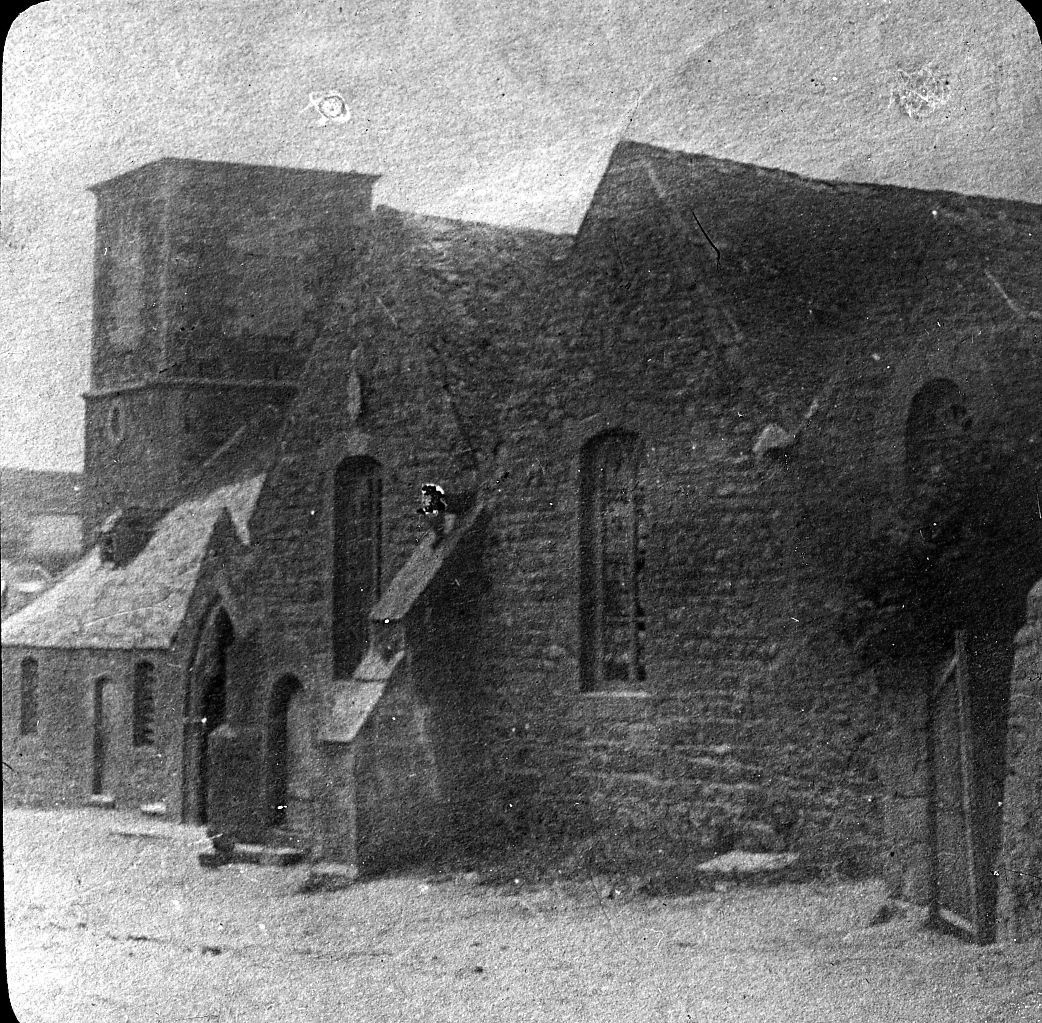
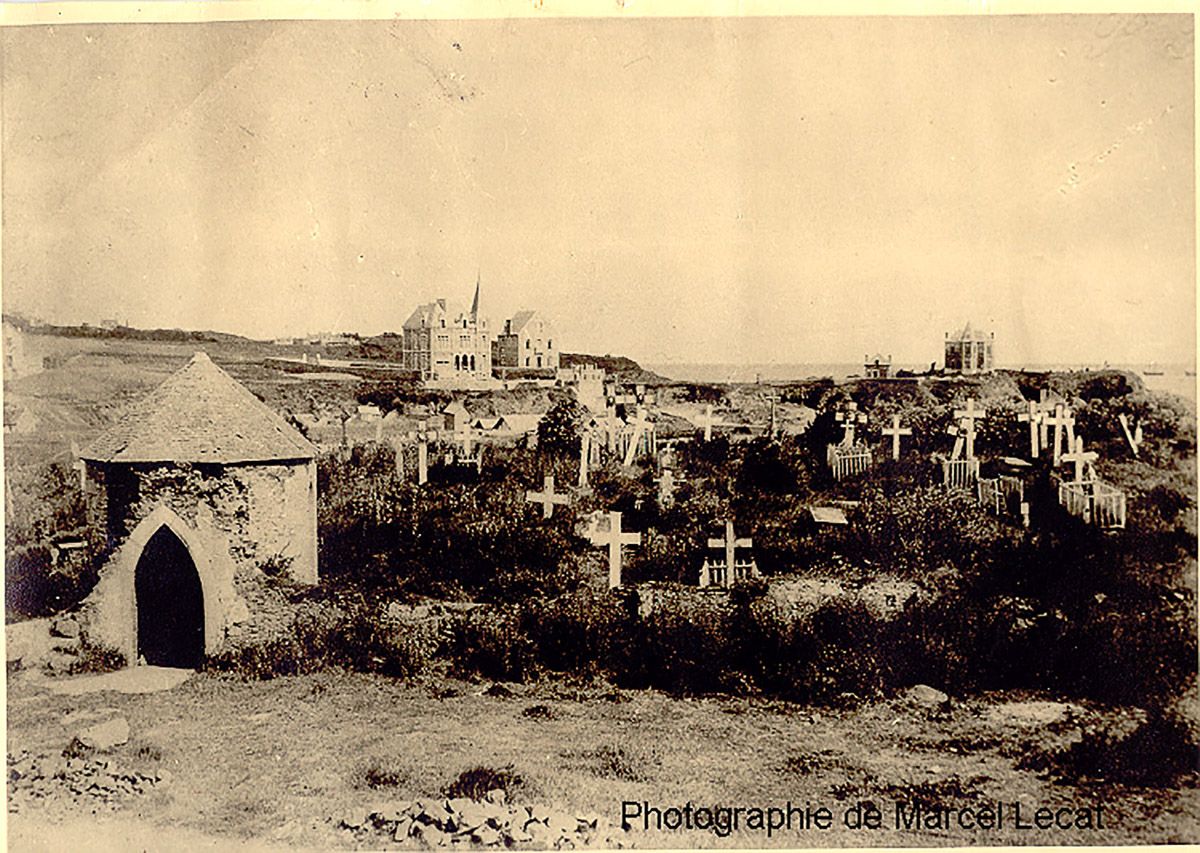
L’ancien cimetière et l’oratoire Saint Nicolas
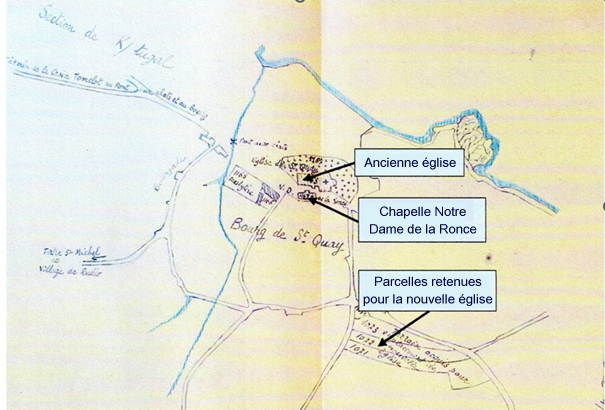
Notre-Dame de la Ronce
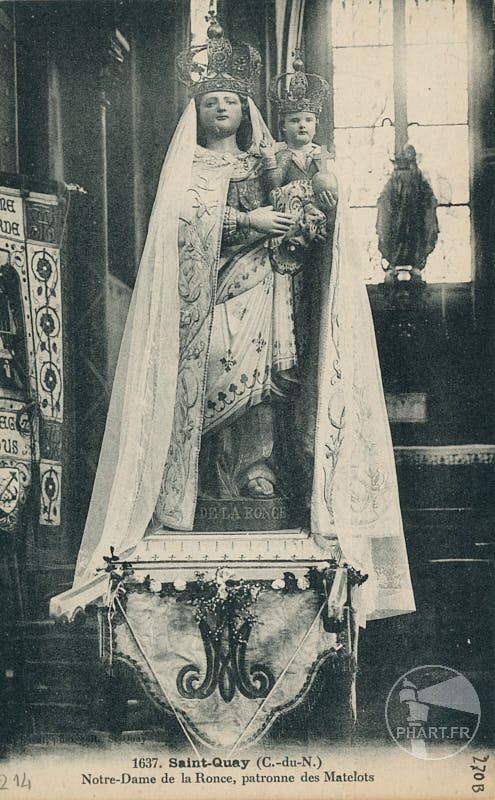
At the height of the fishing industry, up until the middle of the 19th century, the statue of Notre-Dame de la Ronce that it contained was the object of great veneration in the region. Sailors and their families showed their devotion to her, especially when they set sail for Newfoundland. Ships from all over the bay would gather in the Portrieux roadstead. With sails unfurled and anchors raised, the flags signaled departure. Ships equipped with flags would salute Notre Dame de la Ronce with a cannon shot as they passed the beach.
This statue was moved to the present-day church. Its chapel, to the left of the choir, recalls the original oratory. It is shown on the panel you are looking at.
A few years after the destruction of the old church, in 1892 the cemetery graves were transferred to the Bel Air cemetery, opened not far from the new church. The land formerly occupied by the church, the cemetery and the ND de la Ronce chapel was used to build the casino’s beachfront.
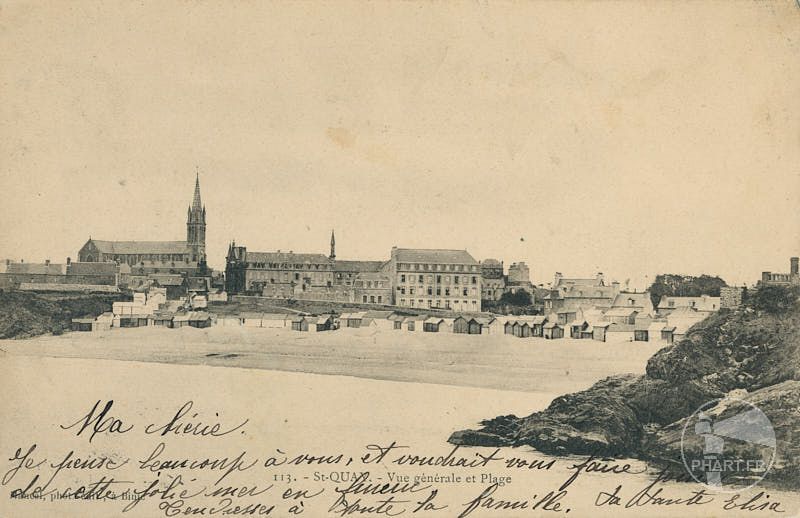
THE NEW CHURCH
The current parish church, dedicated to Saint Quay, was built between 1879 and 1884. It was built in the neo-Gothic style, which was very popular at the time.
The arrival of the railroad in Saint-Brieuc in 1863 made the coastal villages accessible to summer visitors. In Brittany, as in Saint-Quay-Portrieux, many churches deemed too small or dilapidated were replaced by these neo-Gothic edifices, sometimes incorporating older parts, which is not the case here.
Built on a Latin cross plan, in granite, schist and tufa, the church’s dimensions are vast: 55m long, 27m wide, with an 18m-high nave supported by columns that combine lightness and elevation. The church tower rises to 51m. Under the direction of M. Guépin, departmental architect and designer of the plans, local companies and craftsmen carried out the work.
The people of Saint-Quay-Portrieux were very concerned about the construction of their church.
The land was donated by two parishioners. Most of the funding for the work was provided by the conseil de fabrique (an assembly of clerics and lay people who, until the 1905 law separating church and state, were responsible for managing the parish’s funds and income, and maintaining the buildings and furnishings). It was supplemented by collections from parishioners, who proved very generous, by a loan and by a small endowment from the state.
Many parishioners contributed financially to the ornamentation of the chapels, the stained glass windows, the bells… even the architect, who owned a house in Saint-Quay-Portrieux, cut his fees in half.
On May 11, 1884, in a grand procession, the Blessed Sacrament was transferred from the old church to the new one. On November 9 of the same year, the church was solemnly consecrated by the Bishop of Saint-Brieuc in the midst of a large crowd.

Saint-Quay church furniture
With the exception of a few old statues, the church’s furnishings are contemporary with its construction.
Some points of note
The pulpit and stalls are the work of a Lannion workshop.
The pulpit was exhibited at the Paris Universal Exhibition in 1889, where it won a prize. It is reminiscent of the 13th-century style. At the corners, the four evangelists frame panels depicting the Nativity, Resurrection, Pentecost and Assumption.


The stained glass windows in the choir were made by a workshop in Le Mans.
The central window is dedicated to Saint Quay. It represents one of the many versions of his life, which does not correspond to historical research. From bottom to top: his episcopal consecration, his disembarkation on the Fonteny beach, his death (for more information on Saint Quay, see the “Saint Quay fountain” panel).
The right-hand window depicts the conversion, farewell to the Ephesians and martyrdom of Saint Paul.
The left-hand window shows Saint Augustine listening to Saint Ambrose, his conversion and the evangelization of the people of Hippone.
The stained-glass windows in the aisles are from the same workshop as those in the choir, and feature the Stations of the Cross.
A large late-19th-century pieta, “Notre-Dame de Pitié”, adorns the north aisle.
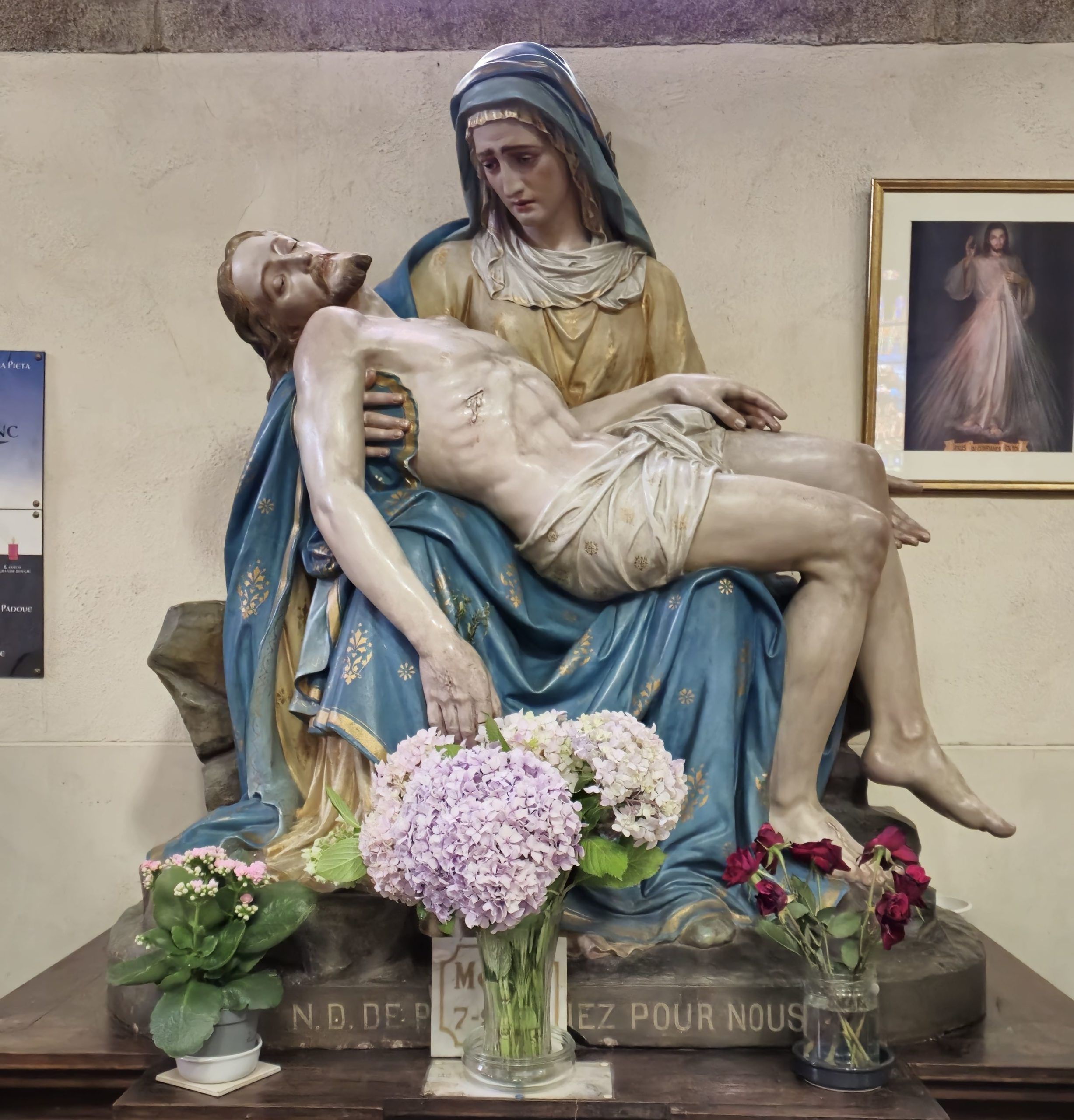
The more recent stained glass windows in the transepts and secondary chapels date from the second half of the 20th century.
Built in the 1900s for another church by Joseph Merklin (1819-1905), a leading figure of romantic organ and competitor of Cavallié-Coll, the great organ was acquired by the parish in 1932, and was last completely restored in 2011. It comprises 3 manuals, a pedalboard and 48 stops.
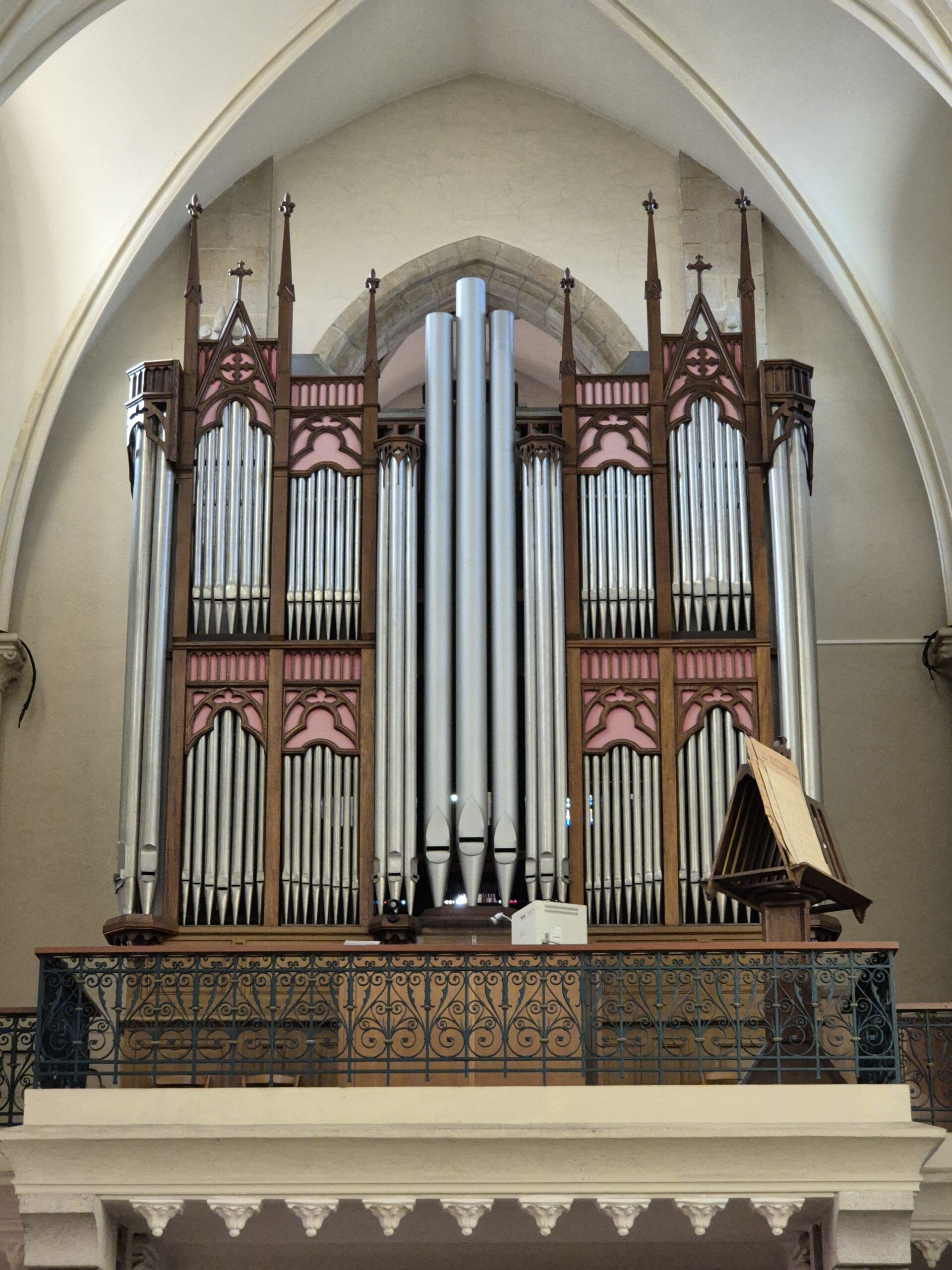
Two early statues, dating from the 18th century, come from the first church: Saint Quay and Saint Samson, on either side of the choir.
Saint Quay gave his name to the commune. (see panel “La fontaine saint Quay”).
Saint Samson was the founding bishop of Dol in the 6th century. His presence is a reminder that the parish of Saint-Quay-Portrieux was an enclave of the diocese of Dol until 1802.
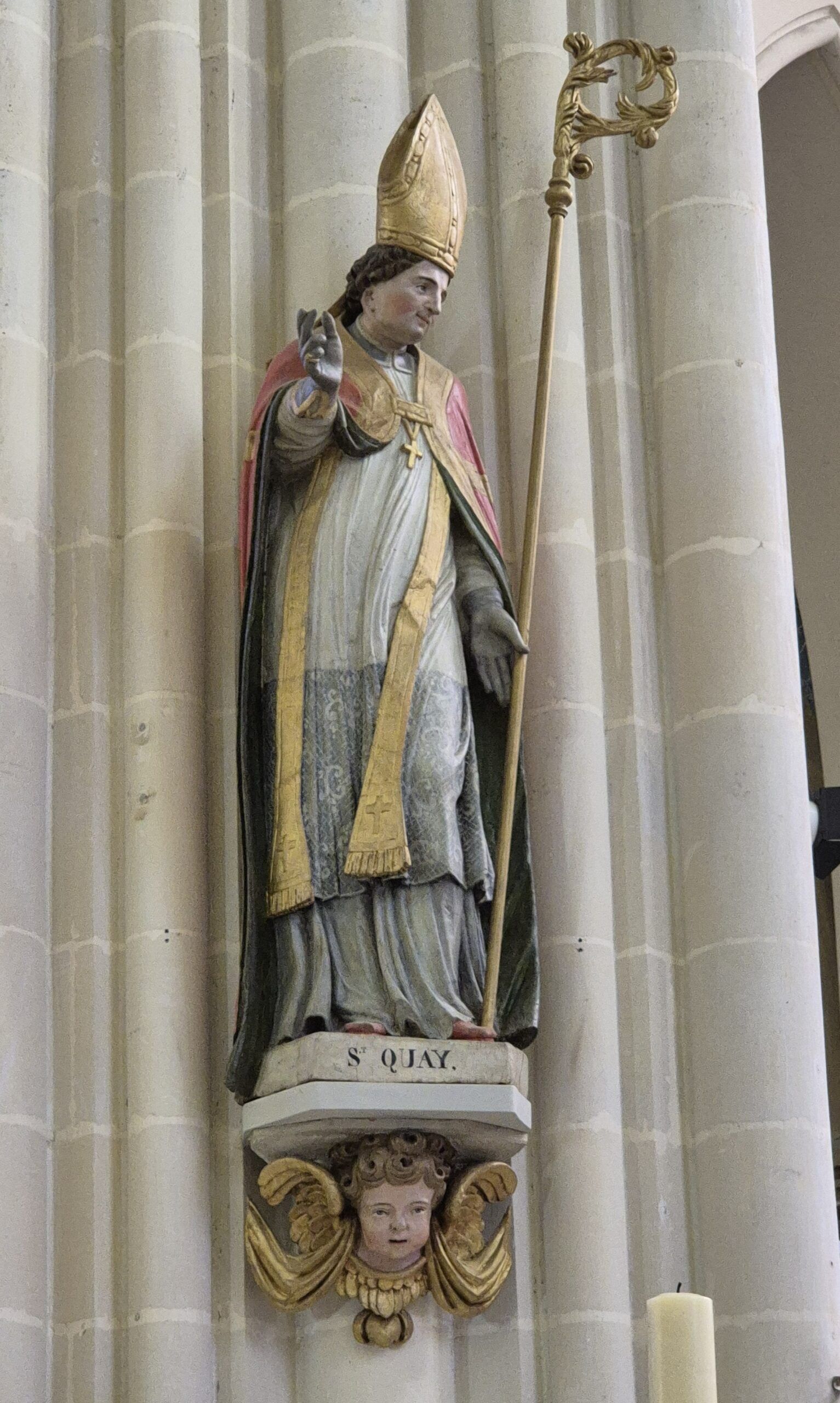
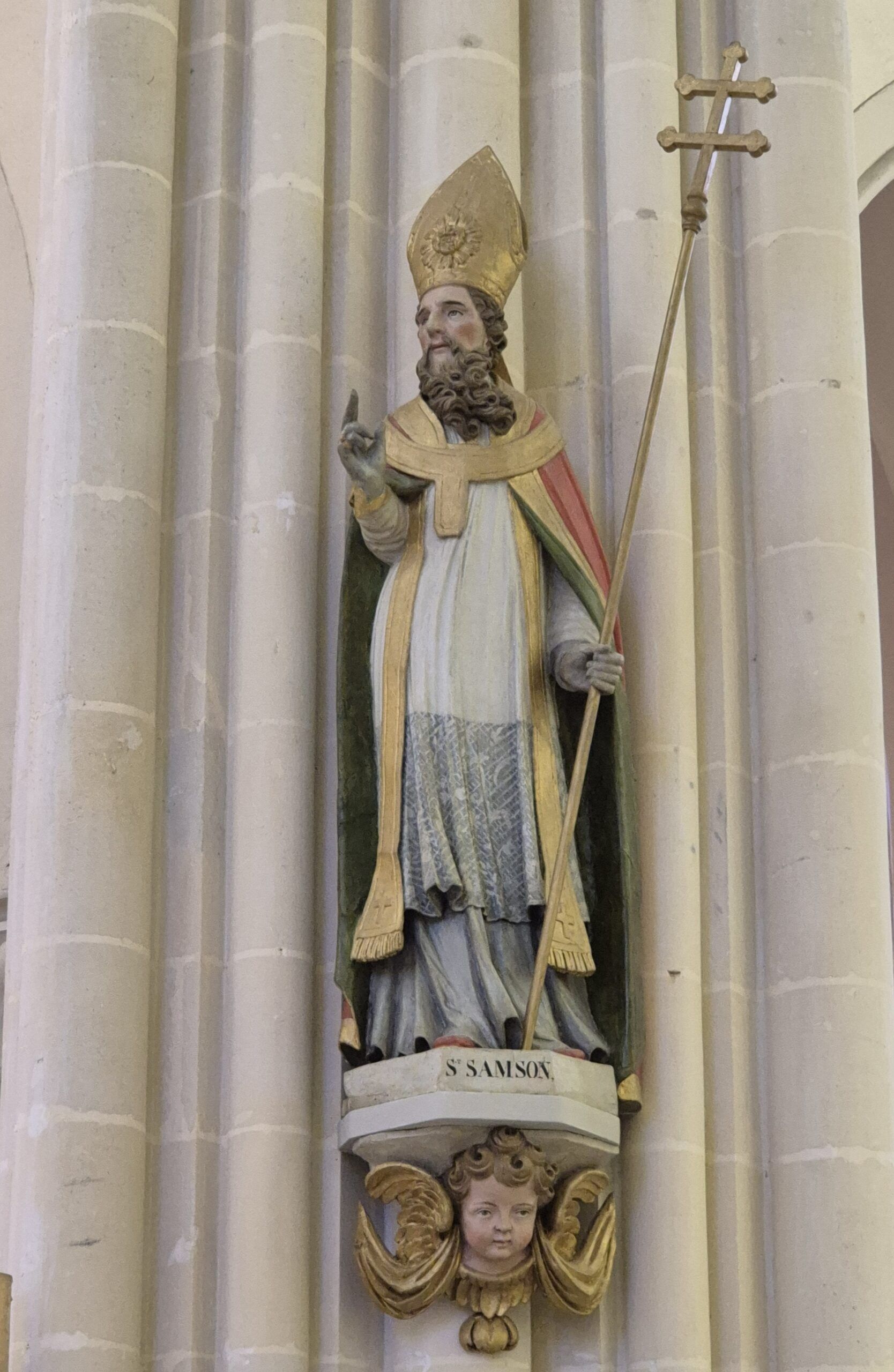
The 16th-century statue of Notre Dame de la Ronce dominates the altar of the north side chapel. It comes from the former Notre Dame de la Ronce chapel, which adjoined the first church. Particularly venerated by sailors, it recalls that, according to legend, Saint Quay, a monk from island Brittany in the 5th century, after crossing the sea “in a stone trough”, was pursued and whipped by the local women. The Virgin rescued him, leading him to safety under a bush dominated by a gigantic bramble…
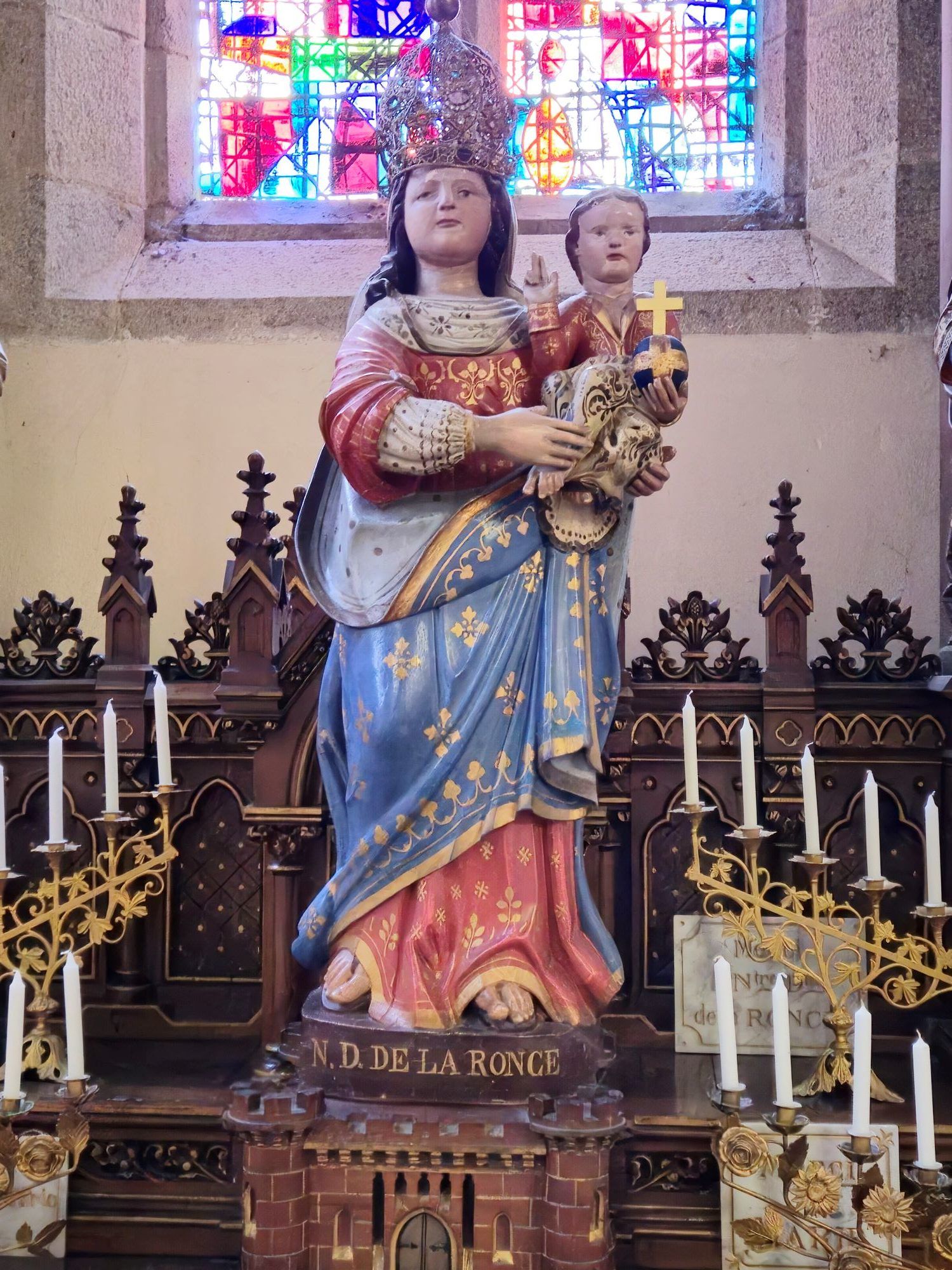
In a showcase in the north transept, a reliquary displays what, according to tradition, is the Head of Saint-Quay. In the past, during the pardon of Saint-Quay on the third Sunday in July, this relic was carried on a stretcher. Raised, the faithful would pass “under the skull” as a sign of allegiance and belonging.
